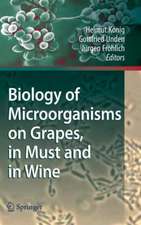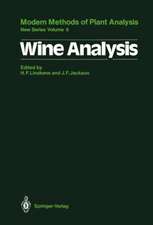Safe or Not Safe: Deciding What Risks to Accept in Our Environment and Food
Autor Paul Pechan, Ortwin Renn, Allan Watt, Ingemar Pongratzen Limba Engleză Paperback – 8 oct 2014
• What do we want as individuals, as a society
• What is the political context of the risk discussion
• When do we act and what are the costs of not acting/acting
• International trade and legal issues
• Moral dimensions of decision making
• How do we deal with the disproportionate "power" of the various stakeholders
• Rationality/emotive aspects of argumentation (connection between perception /live experiences, knowledge)
• What are facts- and do they change with time
• Psychological aspects: rapture of trust; the need for certainty; connection between danger, fear and risk
| Toate formatele și edițiile | Preț | Express |
|---|---|---|
| Paperback (1) | 633.68 lei 6-8 săpt. | |
| Springer – 8 oct 2014 | 633.68 lei 6-8 săpt. | |
| Hardback (1) | 638.43 lei 6-8 săpt. | |
| Springer – 12 mai 2011 | 638.43 lei 6-8 săpt. |
Preț: 633.68 lei
Preț vechi: 745.50 lei
-15% Nou
Puncte Express: 951
Preț estimativ în valută:
121.25€ • 126.94$ • 100.33£
121.25€ • 126.94$ • 100.33£
Carte tipărită la comandă
Livrare economică 05-19 aprilie
Preluare comenzi: 021 569.72.76
Specificații
ISBN-13: 9781489993014
ISBN-10: 1489993010
Pagini: 160
Ilustrații: XII, 145 p.
Dimensiuni: 155 x 235 x 8 mm
Greutate: 0.23 kg
Ediția:2011
Editura: Springer
Colecția Springer
Locul publicării:New York, NY, United States
ISBN-10: 1489993010
Pagini: 160
Ilustrații: XII, 145 p.
Dimensiuni: 155 x 235 x 8 mm
Greutate: 0.23 kg
Ediția:2011
Editura: Springer
Colecția Springer
Locul publicării:New York, NY, United States
Public țintă
ResearchCuprins
1. Risks.- 2. Biodiversity at Risk.- 3. Chemical Contaminants in Food.- 4. The Food Choices We Make.
Recenzii
From the reviews:
“An additional subtitle to this excellent book should be ‘risk management.’ … This book will be useful for a wide audience, especially students, faculty, and researchers in environmental, food, risk management, political science, legal, and communication disciplines, as well as politicians and the concerned public. Summing Up: Recommended. All readers.” (R. E. Buntrock, Choice, Vol. 49 (2), October, 2011)
“An additional subtitle to this excellent book should be ‘risk management.’ … This book will be useful for a wide audience, especially students, faculty, and researchers in environmental, food, risk management, political science, legal, and communication disciplines, as well as politicians and the concerned public. Summing Up: Recommended. All readers.” (R. E. Buntrock, Choice, Vol. 49 (2), October, 2011)
Notă biografică
Paul Pechan is a researcher at the Department of Communication and Media Research, Ludwig Maximilians University Munich. His background is in molecular biology but since 2000 he has been involved in the research and communication of science to the public and youth. His latest work includes scientific papers on information recall, texts for 5 health films and a UNESCO manual for teachers.
Allan Watt is a research scientist at the Centre for Ecology and Hydrology, Edinburgh. He has led several international projects with a focus on conflicts between human activities and biodiversity.
Ingemar Pongratz is group leader and holds an Assistant Professorship at the Department for Biosciences and Nutrition at KI. Dr Pongratz’s main research area is the biology and function of pHLH-PAS proteins and he leads his own research group studying the effects of dioxin exposure at the cellular level.
Ortwin Rennserves as full professor and Chair of Environmental Sociology and Technology Assessment at Stuttgart University (Germany). He directs the Interdisciplinary Research Unit for Risk Governance and Sustainable Technology Development (ZIRN) at Stuttgart University and the non-profit company DIALOGIK, a research institute for the investigation of communication and participation processes in environmental policy making.
Allan Watt is a research scientist at the Centre for Ecology and Hydrology, Edinburgh. He has led several international projects with a focus on conflicts between human activities and biodiversity.
Ingemar Pongratz is group leader and holds an Assistant Professorship at the Department for Biosciences and Nutrition at KI. Dr Pongratz’s main research area is the biology and function of pHLH-PAS proteins and he leads his own research group studying the effects of dioxin exposure at the cellular level.
Ortwin Rennserves as full professor and Chair of Environmental Sociology and Technology Assessment at Stuttgart University (Germany). He directs the Interdisciplinary Research Unit for Risk Governance and Sustainable Technology Development (ZIRN) at Stuttgart University and the non-profit company DIALOGIK, a research institute for the investigation of communication and participation processes in environmental policy making.
Textul de pe ultima copertă
Safe or Not Safe aims to present a comprehensive picture of food-related risk issues, as observed in daily life. Included are numerous real-life examples showing how scientists measure, assess, evaluate and manage potential risks, and how this helps us to decide how to manage our food chain and ultimately the food we eat.
The book is divided into four interrelated chapters. Chapter one deals with risk: Risk examples are given from our daily life, illustrating what we need to know about risks and how to manage them. Chapter two addresses the risks to biodiversity. Chapter three investigates the risks chemical contaminants pose to our health through the food chain. The final chapter reviews the last three decades of creating genetically engineered food, focusing not only on the science behind the technology, but also on issues, such as consumer choice and rights, politics, product usefulness, and the availability of alternatives.
Aimed especially at food science professionals and educators, undergraduate and graduate students, health professionals, and an interested general public will also benefit greatly from this resource.
The book is divided into four interrelated chapters. Chapter one deals with risk: Risk examples are given from our daily life, illustrating what we need to know about risks and how to manage them. Chapter two addresses the risks to biodiversity. Chapter three investigates the risks chemical contaminants pose to our health through the food chain. The final chapter reviews the last three decades of creating genetically engineered food, focusing not only on the science behind the technology, but also on issues, such as consumer choice and rights, politics, product usefulness, and the availability of alternatives.
Aimed especially at food science professionals and educators, undergraduate and graduate students, health professionals, and an interested general public will also benefit greatly from this resource.
Caracteristici
Deals with risk concerns and risk management in relation to the food industry Presents the global and local issues concerning risk and its management in the food industry Offers ways to discuss information with graduates students and professionals Includes supplementary material: sn.pub/extras









